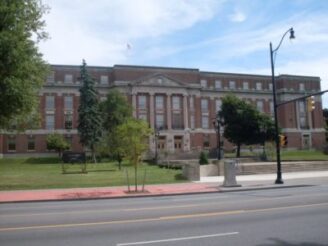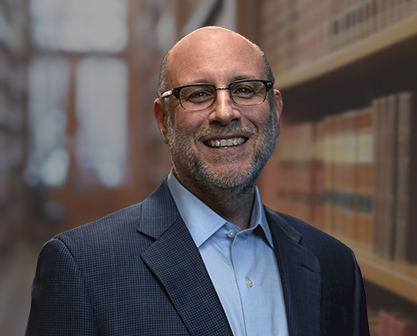Bennett High School
You may be entitled to receive compensation. Mesothelioma and lung cancer victims & their families have been awarded over $1 million+ from easy access to funds. Call us today to apply.
Over the past 20 years, we've helped 1,000s of families claim the compensation they deserve with no upfront costs to them.

Bennett High School in Buffalo opened in 1925 and was named for Lewis Jackson Bennett, a North Buffalo resident who donated 415 acres of land to the city. The high school closed in 2017 and was replaced by a new school bearing the Bennett name.
Schools built prior to 1980 are assumed to contain materials made from asbestos, a carcinogenic mineral fiber that was once used in thousands ofasbestos products. Exposure to asbestos can cause mesothelioma, lung cancer and asbestosis.
Studies have shown that teachers and schoolchildren have an elevated risk for developing mesothelioma. The Environmental Protection Agency (EPA) estimates that there is asbestos in most of the nation’s primary, secondary and charter schools. Asbestos in schools is a health hazard for students, teachers, and custodial and maintenance staff.
Belluck Law has helped many workers exposed to asbestos in school buildings recover maximum compensation after a mesothelioma diagnosis. We know where asbestos was used at Bennett High School and which companies provided the asbestos materials, as well as how workers, teachers and students were exposed. To schedule a free consultation with our award-winning mesothelioma lawyers, please contact us today.
Asbestos Exposure at Bennett High School
Table of Contents
In a report about asbestos in schools, the EPA notes that asbestos-containing materials are most commonly found in products that include the following:
- Spray-applied fireproofing
- Floor tile
- Ceiling tile
- Cement asbestos pipe and other cement products
- Corrugated paper pipe wrap
- Acoustical and decorative insulation
- Boiler, pipe and pump insulation
- Asbestos gaskets
- Pump packing material
- Fireproof textiles
- Roofing materials
- Laboratory products, including tables, countertops and hoods
- Electrical products
- Paint and patching compounds
- Window glazing
- Chalkboards
The EPA notes that intact and undisturbed asbestos materials typically do not pose a health risk, but they become hazardous when they are damaged or deteriorated. Hard asbestos materials such as vinyl floor tiles can create exposure problems when they are degraded.
Generally, the greatest exposure hazard is from “friable” asbestos, such as spray-on fireproofing, insulation, and gaskets and packing material. For example, servicing boilers requires removing and replacing friable asbestos insulation that can create airborne fibers.
In addition, removing asbestos gaskets and packing involves scraping and using a wire brush on degraded asbestos materials. Asbestos fibers can also be disturbed during building repairs, maintenance and renovations.
School Teachers and Students Face an Elevated Mesothelioma Risk
There is a misconception that only construction workers and other trade workers who directly handle asbestos materials are at risk for developing diseases like mesothelioma. However, research shows that school teachers are among the most atrisk for asbestos-related illnesses — and the risk for students is even greater.
According to data from the National Center for Health Statistics, elementary and secondary school teachers ranked second for mesothelioma deaths in 1999, trailing only the construction industry. A 2007 study by the National Institute for Occupational Safety and Health also found that school teachers were more than twice as likely as the average American to die from mesothelioma.
Due to the age at which their asbestos exposure occurs, schoolchildren have a significantly higher lifetime risk of developing mesothelioma. The EPA estimates that a child exposed to asbestos between the ages of 5 and 10 has a risk of developing mesothelioma that is at least 10 times higher than an adult exposed to the same level of asbestos between the ages of 35 and 40.
Asbestos Contamination Was Widespread in New York Schools
In the 1980s, the EPA sampled 2,600 public and private schools and estimated that 15 million students and 1.4 million teachers and school personnel were at risk of asbestos exposure. Based on this, Congress passed legislation in 1986 — the Asbestos Hazard Emergency Response Act (AHERA) — requiring schools to regularly inspect for asbestos, clean up dangerous materials and publicly report the work.
More than 30 years after AHERA was passed, though, asbestos in U.S. schools remains a widespread hazard. In 2013, an analysis of Chicago public schools found damaged asbestos in need of removal or repair in more than 180 schools. By 2015, just 11 of the schools had complied with its recommendations.
In the fall of 1993, the start of the New York City school year was delayed due to the discovery of asbestos in the city’s public schools. Of 1,069 schools inspected, only 46 were deemed “safe for occupancy.” A follow-up examination of school asbestos reports found inaccuracies, revelations of past warnings and EPA citations. The school district’s efforts to comply with AHERA were “a comedy of errors with tragic consequences,” according to a report issued on the inspections.
In March 2015, Senate Democrats Edward Markey and Barbara Boxer wrote to the governors of all 50 states asking whether they were complying with AHERA. The answers suggested that the law is still not being followed uniformly.
History of Bennett High School
Lewis J. Bennett was a civic-minded businessman from Buffalo. Mr. Bennett donated the land on which Bennett High School and All-High Stadium were built, although he passed away before the $2 million school was completed.
Bennett High School officially opened on September 8, 1925, to around 2,500 students. The school’s first principal was Charles Elbert Rhodes, formerly of Lafayette High School. During the Great Depression, Rhodes encouraged students to believe that “the best is yet to be.” During World War II, Bennett raised more than $200,000 in war bonds, earning the privilege of naming a plane The Bennett Tiger.
In 2014, Bennett High School stopped accepting incoming classes. It was replaced by Middle Early College High School, which opened in 2004, and the Lewis J. Bennett School of Innovative Technology, opened in 2016. The school’s final class graduated in 2017.
Top-Rated Asbestos Attorneys Serving Buffalo
Belluck Law is a nationally recognized asbestos law firm that aggressively fights for maximum compensation for individuals and families who have been harmed by asbestos diseases. Our dedicated asbestos lawyers have helped hundreds of clients in Western New York and throughout the state and nation recover more than $1 billion from the companies responsible for their asbestos exposure.
If you worked at Bennett High School in Buffalo and were diagnosed with mesothelioma, lung cancer or asbestosis, we can meet with you during a free consultation to discuss your legal options. To get started, please contact us today.
Sources:
- Environmental Protection Agency: The ABCs of Asbestos in Schools
- Bennett High Alumni Association: A Brief History of Bennett High School
- Environmental Working Group: Five Myths about Asbestos in Schools
- Asbestos Nation: Inspectors Find Widespread Asbestos Risks in Chicago Schools
- The New York Times: School Asbestos More Extensive Than Expected
- Education Week: Asbestos Debacle Delays the Start of School in NYC
- The Washington Post: Authorities worry that many U.S. schools could have dangerous asbestos
- Fordham Environmental Law Review: New York City’s School Asbestos Debacle
- Asbestos Nation: Asbestos Remains Widespread Hazard in U.S. Schools
Other Asbestos Companies in New York
- Garlock Palmyra
- Remington Arms
- Buffalo Electric In Buffalo New York
- General Foods
- James A Fitzpatrick Nuclear Plant
- Plattsburgh Air Force Base
- New Process Gear New Venture Gear Workers
